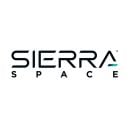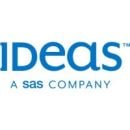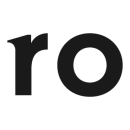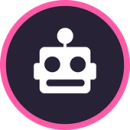Jeff Bezos once stated, “Be stubborn on vision but flexible on details.”
The Amazon founder undoubtedly knows a thing or two about the need to adapt when launching a new product. Because every new solution that hits the market is the result of embracing ambitious dreams — and overcoming challenges.
Of course, challenges aren’t always the same. When Celonis launched its new Studio experience, the company faced the hurdle of finding a balance between flexibility and ease of use. Meanwhile, at Sierra Space, the rapid pace of development of its Eclipse satellite bus line of products meant a continuous learning process. “We leveraged daily stand-up meetings to kick off our workday and lay out current problems, any hindrances to progress and action items,” said Mechanical Engineer Ander Baumann.
Regardless of how a new product reaches fruition, the end result is the same for any company: heightened impact and a greater understanding of how to tackle complexity in the future. Built In caught up with 10 leaders at companies across the country to learn about the new products their teams have launched, the challenges overcome in the process and the lessons learned along the way.
Featured Companies
Warner Bros. Discovery is the global media and entertainment conglomerate behind numerous streaming brands, including Max, HBO, Discovery+ and TNT Sports.
Tell us about a recent product your team launched. How does it drive Warner Bros. Discovery’s mission forward?
We recently launched a number of interactive sports features for TNT Sports on Discovery+ that we’ve been expanding on ahead of the Paris 2024 Olympics. These include: “timeline markers,” which allow fans to seamlessly rewatch or catch up on all the key moments of the action; and “goal alerts,” which enable fans to be notified of a goal scored in another match happening at the same time. With the goal alert, users can easily jump straight to that moment in the other match or dismiss the alert entirely if they’re not interested.
These features enable us to do right by our fans by ensuring they never miss a moment of the action, whenever or however they’re watching. In the U.K., Discovery+ streams all the action from the UEFA Champions League, Premiership Rugby and, of course, the Olympics, among many other sports. Combining wide-ranging sports programming with these innovative features has enabled us to not only showcase sports, but also empower the storytelling that comes along with them. During the Olympics, you’ll see timeline markers and “key moment alerts” — alerts signifying gold medals — as things heat up.
“Combining wide-ranging sports programming with these innovative features has enabled us to not only showcase sports, but also empower the storytelling that comes along with them.”
What obstacles and challenges did your team encounter — and overcome — while launching these new features?
A small team of experts from product, development, QA and operations were set up to focus on this project and given a soft launch deadline. This involved lots of pizza-fueled, end-to-end match testing that ran late into the evening, but by being able to debug live and make quick decisions, we started to see improvements with each additional test. We hit the soft launch date, and, therefore, were able to gain early user feedback and iron out any last bugs before the features fully launched.
What’s the biggest lesson your team has taken away from this launch, and how has it changed the way your team operates?
When it comes to live-streaming sports, there’s no time for mistakes on the night of a game. End-to-end live rehearsals and testing with all teams involved meant everyone could sleep easier on launch night. Less incidents means less stress, while less stress means more time for product development and hardening. That in turn makes for not only a better user experience, but also a happier team.
Celonis’ software enables organizations to optimize business processes by uncovering and fixing hidden inefficiencies.
Tell us about a recent product your team launched. How does it drive Celonis’ mission forward?
One recent product launch I had the opportunity to work on was the release of our new Studio experience. With the support of an incredible team of “Celonauts,” we successfully introduced a completely redesigned Studio aimed at delivering a more joyful user experience for our customers.
Successfully delivering our new Studio experience to our customers is a project that’s deeply intertwined with Celonis’ mission to enable customers to take control of their processes and realize value for their businesses. In fact, our customers were the biggest factor in the successful ideation, design and creation of the new Studio experience. Almost every facet of the updated product was designed based on direct feedback we received, and the close collaboration between our customers and the Celonis teams resulted in a truly unique and successful collaboration that really embodied Celonis’ core values and mission.
What obstacles and challenges did your team encounter — and overcome — while launching the new Studio experience?
One of the biggest challenges my team faced was striking the right balance between offering a solution that’s powerful and flexible for all kinds of customers and use cases, while also guiding users and offering a tool that’s easy to use. One example from my experience was when we were considering how our users build charts. In our legacy Views system, we had a lot of flexibility because users could essentially create any visualization they wanted but there was very little guidance or help for users built into the product. We found that many of our customers, especially those just starting out, struggled with knowing how to get started and often weren’t able to build the visualizations they needed without additional support.
This led us to an entirely new chart template approach that provides guiding chart templates to help users get started, while still allowing flexibility to build on top of and customize these templates. This challenge of balancing flexibility and simplicity was the primary focus of the new Studio building experience.
What’s the biggest lesson your team has taken away from this launch, and how has it changed the way your team operates?
One of the biggest lessons I learned from this launch was the importance of getting your product in front of customers as early as possible. During this launch, we implemented an extensive early adopter program that ran for several months before the official product release. We interacted with many of these customers weekly, and their excitement and engagement throughout the program were remarkable. The constant input and feedback we received from them were instrumental in driving our product development decisions.
“I learned the importance of getting your product in front of customers as early as possible. We interacted with early adopters weekly, and the constant input and feedback were instrumental.”
The success of this model has had a significant impact on the way our team plans to operate going forward, and as we move on from this successful release our team intends to keep these valuable lines of open communication with our customers moving forward.
Sierra Space develops spaceplanes, satellites, space stations and other space technologies designed for commercial and governmental use.
Tell us about a recent product your team launched. How does it drive Sierra Space’s mission forward?
Recently, we launched the Sierra Space Eclipse satellite bus line of products, which enable increased commercial access to space and support U.S. National Security efforts. I was part of the propulsion subsystem group within the space technologies business sector, where we designed and developed numerous state-of-the-art systems to increase our satellite bus capabilities while on orbit.
These satellites further support our mission to drive the commercial space economy forward by allowing companies, be it corporations or startups, to have accessible means to test new products and technologies in various orbits. The refueling capabilities integrated in these products extend time in orbit so customers can gather more data on their payloads and National Security efforts can remain operable for longer, ensuring our safety by eliminating gaps in capabilities and assets and reducing costs.
“These satellites further support our mission to drive the commercial space economy forward by allowing companies, be it corporations or startups, to have accessible means to test new products and technologies in various orbits.”
What obstacles and challenges did your team encounter — and overcome — while launching the Sierra Space Eclipse line?
With these complete satellite space vehicles being designed in-house and built for space flight, there were many obstacles and roadblocks we encountered, some of which we anticipated, while others we did not. Our team rose up to each challenge with tenacity, regardless of whether we knew the immediate path forward or if we were left scratching our heads about what to do next.
Often, because of how rapidly these systems were being developed, creative solutions weren’t only welcomed, but required. We leveraged daily stand-up meetings to kick off our workday and lay out current problems, any hindrances to progress and action items. It was a constant learning experience as we established the process for other programs — many lessons were learned, but it made us that much more knowledgeable. These learned lessons were then applied to the next programs and space vehicles, enabling quick, focused development that allows us to bring these various satellite bus designs to the market at such a swift pace
What’s the biggest lesson that your team has taken away from this launch, and how has it changed the way your team operates?
I would say the biggest takeaway we learned was which key items or requirements were crucial to have completed or refined at various stages in the development process. There were checklist items that we quickly learned need to be intertwined in the design process from the beginning, even though they can’t be checked off later in the process or until build completion. It absolutely changed how our team thinks and operates to where, on current and future programs, these checklist items are continuously monitored, gradually addressed and always on our mind throughout the development of the subsystems and space vehicle.
The difficulties faced on the earlier programs ingrained in us how the plethora of late-stage design needs, considerations and desires must be regularly discussed because the dynamic, iterative nature of the design process can diverge from its original path. If too much time goes by without looking into these aspects, a large gap may exist when it’s next addressed, and that can drain much-needed resources, be it schedule, personnel or financial.
IDeaS’ revenue management software enables hospitality brands to forecast guest and market demand patterns, build a revenue forecasting and budget plan and more.
Tell us about a recent product your team launched. How does it drive IDeaS’ mission forward?
Our flagship product, the IDeaS G3 Revenue Management System, is a testament to our deep understanding of the unique business challenges faced by hotel and accommodation companies. Serving over 30,000 properties, our clients range from small, independently owned hotels to large chains, resorts and outdoor accommodations. IDeaS G3 RMS is widely used across these segments to provide reliable forecasts and scientifically determined pricing, distribution and inventory management decisions. These features are designed to maximize revenue based on a hotel’s available demand.
With the post-pandemic resurgence of business and leisure travel and a steady rate of mergers and acquisitions, our product team recognized the need for an add-on solution, Portfolio Navigator, that enables multiproperty revenue leaders to manage their portfolios efficiently at scale.
“With the post-pandemic resurgence of business and leisure travel and a steady rate of mergers and acquisitions, our product team recognized the need for an add-on solution, Portfolio Navigator, that enables multiproperty revenue leaders to manage their portfolios efficiently at scale.”
To address this growing need for revenue management at scale, our early solution requirements focused on critical client needs. For instance, the system provides users with notifications of unforeseen risks and opportunities within their portfolio and offers recommended actions to help clients protect and grow their revenue.
What obstacles and challenges did your team encounter — and overcome — while launching Portfolio Navigator?
Like with any software tool, developing Portfolio Navigator presented several challenges, but our team tackled them head-on. Early involvement of our product marketing team was crucial in shaping the value proposition and positioning of the solution. This collaboration helped us identify the ideal client profile, package and price for the solution to reflect its usability and value and devise effective go-to-market strategies.
To achieve this, we fostered a close collaboration between internal product management and product marketing teams while incorporating valuable input from clients and sales teams. This continuous dialogue was essential to avoid developing the product in isolation, ensuring we fully understood its scope and market potential and, most importantly, addressed an unmet need in the market.
As product development progressed, our product marketing team further refined the go-to-market plan. This included the naming of Portfolio Navigator, creating engaging content and enabling our sales teams to effectively communicate the product’s benefits. Through teamwork and clear communication, we overcame obstacles and delivered a product that meets our clients’ needs.
How have product launches such as this one changed the way your team operates?
By experiencing regular product or enhancement launches, we know the benefit of working closely together with product management to ensure all aspects are covered and nothing is left to chance. With each new launch, we devise improvements to the collaboration and go-to-market processes based on what we’ve learned in previous launches. This enables our teams to be nimble and ready to meet any change in course that may arise.
Quantum Metric’s digital intelligence platform enables enterprises to monitor customer journeys, identify and quantify friction points within these journeys and surface unmet customer needs.
Tell us about a recent product your team launched. How does it drive Quantum Metric’s mission forward?
Recently, we launched Felix AI, a session summarization product that helps consumers focus on what matters and make key decisions faster with one-click quantification. At Quantum Metric, we help companies build cultures maniacally focused on winning the hearts of their customers. With Felix AI, we envision a world where agents know the context before the customer calls, development teams empathize with customers without spending hours watching replays and customer feedback has session context automatically baked in. Being able to quickly and intelligently make the most customer impact is key to winning and keeping loyal customers.
“With Felix AI, we envision a world where agents know the context before the customer calls, development teams empathize with customers without spending hours watching replays and customer feedback has session context automatically baked in.”
What obstacles and challenges did your team encounter — and overcome — while launching Quantum Metric?
Generative AI and large language models are still very new to the market, so there’s a healthy awareness about security and data usage. We knew this would come up immediately when we introduced anything in this space, and we needed to have a product that would meet the needs of the market.
Felix AI is built on Google Cloud Platform’s Gemini Pro model, and each customer has its own “instance” of a model, so it’s only trained using their specific dataset. Brands using Felix AI remain confident that their data is never shared to train models outside of their use. Approaching the concerns this way allowed us to accelerate development and maintain the high privacy and data security standards of the entire Quantum Metric platform.
What’s the biggest lesson your team has taken away from this launch, and how has it changed the way your team operates?
I think one of the biggest things I’ve taken away from the Felix AI launch is how a single product can change how the entire organization thinks about customer problems and solutions. Rather than tackling problems with traditional methods, we’re now questioning whether our original approach to some solutions make sense and whether we’re asking the right questions to begin with. This has pushed us to approach problems differently, and we’re now iterating faster in new solution areas as well.
Tebra products are designed to help independent healthcare practices grow, offer an optimal patient experience, optimize billing and payments and garner insights from data.
Tell us about a recent product your team launched. How does it drive Tebra’s mission forward?
Tebra is a comprehensive, digital healthtech company formed by the merger of Kareo and PatientPop in 2021. It provides an integrated platform designed to help independent healthcare practices thrive in the modern era of consumer-driven healthcare. One exciting new product line we have launched is a healthcare directories platform for both patients and providers alike called Care Connect. Directories are a huge player in organic searches for patient healthcare, and we knew we needed to meet patients where they are.
The capabilities we have built allow patients to search for a physician, nurse or other healthcare provider near them. Another capability we launched is our healthcare provider profile page, which allows providers to showcase themselves, their practices and patient ratings and even offer online scheduling to be used by both themselves and patients. Since search is a critical part of the patient journey, we’ve built out the core structure of the Care Connect platform to be SEO-optimized. Care Connect aligns with Tebra’s mission of unlocking better healthcare by helping independent practices bring modernized care to patients everywhere.
“Care Connect aligns with Tebra’s mission of unlocking better healthcare by helping independent practices bring modernized care to patients everywhere.”
What obstacles and challenges did your team encounter — and overcome — while developing Care Connect?
Our biggest challenge in developing Care Connect was data. Normalizing data for thousands of providers was no easy feat. We ran into lots of challenges, and we overcame them through significant analysis and data normalization. Another ongoing challenge has been standardizing our scheduling systems and getting all Tebra providers to enable scheduling for their prospect patients. To overcome this, we’ve developed self-service profile manager solutions and campaigned to our Tebra providers to update their data to best align with their service offerings.
We had the opportunity to work collectively across two platforms, Kareo and PatientPop, and with multiple teams across product, development and design. Other teams we worked with include customer care, onboarding and account management. This project fostered new partnerships and team camaraderie.
What’s the biggest lesson your team has taken away from this launch?
The biggest lesson we’ve learned from the launch of Care Connect directories is that finding a “one-size-fits-most” solution isn’t always feasible. We still need to continue to evolve our offerings to best suit the needs of all of our providers. We have a constant stream of feedback from our customers that helps us prioritize where to invest next. Having a directory product that competes in the crowded search space necessitates that we continue to study and stay on top of the ever-changing SEO landscape.
Thumbtack’s platform connects homeowners with local service professionals who can assist with repair, maintenance and improvement projects.
Tell us about a recent product your team launched. How does it drive Thumbtack’s mission forward?
We recently launched the biggest product update in Thumbtack’s history — an entirely redesigned app including 30 new features to help consumers easily navigate the cost and complexity of owning a home. Historically, we’d been focused on being the best place to hire a local service professional, but with this update, we’ve created an all-in-one home solution that provides guidance on what projects to do, when to do them and who to hire so that homeowners can take action with confidence. Now, homeowners have a single place to prioritize and manage all of their repair, maintenance and improvement plans, tools to help them tackle projects and a seamless way to rebook and refer their favorite local service professionals.
Our research found that 83 percent of recent first-time homeowners were surprised by the complexity of their homes after moving in, and 88 percent want an app to plan and manage their home projects. Thumbtack’s new app meets this rising demand.
“Our research found that 83 percent of recent first-time homeowners were surprised by the complexity of their homes after moving in, and 88 percent want an app to plan and manage their home projects. Thumbtack’s new app meets this rising demand.”
What obstacles and challenges did your team encounter — and overcome — while launching this product update?
Members of today’s digitally native generation want to manage their homes the way they run the rest of their lives — from their phones. Until now, this hasn’t been possible. Because nothing like this currently exists for homeowners, it was a challenge to figure out how and when to introduce them to the different features in our new platform. Originally, we thought that giving homeowners the tools to plan their future home projects with a seamless way to get those done would be the right experience to lead with. However, we found that customers really wanted that personalized guidance before they started putting their plan together. Currently, over 90 percent of the tasks customers put on their plans are from recommendations.
What’s the biggest lesson your team has taken away from this launch, and how has it changed the way your team operates?
In the beginning of the process, we thought every single small change needed to demonstrate business value on its own, but one of the shifts we made was to think about the broader picture and which customer problems we were trying to solve. Historically, when we launched new products, we would test each new feature in a silo to measure the results against our baseline. With this launch, we tested all the new features of the app together, but on a smaller scale. This allowed us to see the impact of these features working together; we could see how the addition of guides led to more projects being added to plans, which led to more pros being hired, ultimately creating a bigger impact on homeowners.
Shifting the whole value proposition of the user experience is risky. We knew we would have to make some pretty significant changes to the experience, but we also didn’t want to risk our broader business or slow the team down as they were building. To do this, our engineering, design and product teams focused on proving our customer-centered hypotheses rather than measuring success against shifts in business or revenue metrics. We created a small “sandbox” of users for the team to build with, while relying on a combination of shipping directly to that sandbox and A/B testing of some of the bigger pieces of the new experience all within that sandbox.
As a very data-driven company, it was tough to not always be able to point to clean A/B tests or holdouts to prove the impact we were having. The nature of the impact we’re driving is to change users’ long-term habits, which won’t necessarily always show up in an A/B test. At the same time, we needed to ensure we had clearly communicated goals and held accountability for each team working on the launch. This new framework allowed teams to move more quickly and make bigger changes to the experience without the same constraints.
Flourish’s products are designed to help financial advisors grow their businesses and more effectively support their clients.
Tell us about a recent product your team launched. How does it drive Flourish’s mission forward?
Earlier this year, we launched Flourish Annuities, which is the latest product on the Flourish platform geared toward providing independent registered investment advisors with modern and easy-to-use technology solutions to better serve their clients’ financial needs. Flourish Annuities gives financial advisors access to a marketplace of fee-based annuities, an asset class that was previously inaccessible to most advisors due to licensing and operational hurdles. The annuities asset class can bring advisors attractive alternatives, especially for the fixed income portion of client portfolios.
This product line represents the opportunity for tremendous growth for Flourish. The overall annuities market hit $385 billion last year, but the RIA market share is almost nothing, making it a great opportunity for Flourish to grow while also helping advisors improve portfolio construction.
“Flourish Annuities gives financial advisors access to a marketplace of fee-based annuities, an asset class that was previously inaccessible to most advisors due to licensing and operational hurdles.”
What obstacles and challenges did your team encounter — and overcome — while launching Flourish Annuities?
Managing complexity was the major challenge here. We offer multiple products from multiple insurance carriers, so every task came with a slew of variations to be implemented, managed and thoroughly tested to ensure we met our exacting standards for customer experience.
From an engineering perspective, launching Flourish Annuities required us to make sure that an often complicated and varied annuity application process was distilled down to a very concise and straightforward end-user experience, even though the application needs changed depending on variables like client location and annuity type. This involved many iterations on design and data modeling, as we built to make sure Flourish Annuities provides a smooth and easy purchase experience for all parties involved. This posed a challenge not just for building, but for also being able to test and verify many permutations, where the fine details of the application could be subtle but vital to a smooth purchase process for clients. As an estimate, we needed to support hundreds of distinct variations of applications when you combine different annuity policy types with locations and products.
Because of the breadth of offering a product like Flourish Annuities, which works across many different states where we operate and many different products, we leveraged and expanded our automation suite of tools, allowing us to exercise and test the different flavors of Flourish Annuity applications as we added new functionalities or features during the initial build. This made sure we met the specific needs for all of the applications we offer, and it empowered the team to build the project more quickly and confidently as we looked to complete the product leading up to the launch.
Ro is a healthtech company that helps patients optimize their care journeys, enabling them to manage prescriptions and more.
Tell us about a recent product your team launched. How does it drive Ro’s mission forward?
A big part of the culture at Ro is keeping our eyes and ears open to patients’ needs and the gaps in their healthcare. Launching Ro Sparks was a huge step in patient-centric innovation at Ro, maximizing the ease and efficacy of erectile dysfunction treatment.
We heard what patients were saying about the shortcomings of traditional ED meds, such as how it “kills the mood” to have to plan ahead and take a pill so far in advance. So we launched Ro Sparks, which are designed to dissolve under your tongue where the active ingredients absorb directly into your bloodstream for faster results, lasting up to 36 hours. At the end of the day, organizations have to remember the people behind the numbers and the important role we play in the lives of those who choose us, trust us, bring us their problems and ask us for help.
“Launching Ro Sparks was a huge step in patient-centric innovation at Ro, maximizing the ease and efficacy of erectile dysfunction treatment.”
What obstacles and challenges did your team encounter — and overcome — while launching Ro Sparks?
There’s no innovation playbook for a full-stack telemedicine company. From developing new products to launching them on our integrated platform, we have to take into account — and optimize for — the specific needs and experiences of providers, pharmacists and, most importantly, patients. Product launches are a herculean effort even under the simplest of circumstances, but we’re also a hybrid team that’s spread all over the country. In the end, we just kept soft knees and a positive mental attitude while leaning hard on the three “Cs”: communication, collaboration and camaraderie.
How has the launch of Ro Sparks changed the way your team operates?
Each week brought new challenges, but we crossed every bridge and jumped every hurdle as a team. It wasn’t always graceful, but we always made it over. Critically, to increase the ROI of our launch project efforts, we turned every hard-earned problem resolution into a newly unlocked capability that we can operationalize and leverage again in the future. We also developed a new level of rigor and commitment to ruthless prioritization of day-to-day tasks and timeboxing of major decisions. Ultimately, the success of the Ro Sparks launch, and any launch at Ro, is fueled by the team’s unwavering grit and dedication to doing right by our patients.
Homebot offers homeowners personalized and actionable financial insights and connects them with loan officers and real estate agents who can help them with the homeownership process.
Tell us about a recent product your team launched. How does it drive Homebot’s mission forward?
Homebot’s mission is to empower people to make informed homeownership decisions together. Buying or selling a home is a major financial milestone for most Americans, and loan officers and real estate agents are key players in this process. Homebot’s core product helps these professionals guide their clients through every stage of homeownership, promoting financial literacy and wealth-building.
Our latest innovation, Partner Intel, supports our mission by strengthening the collaboration between loan officers and real estate agents. This business intelligence product facilitates stronger relationships, resulting in a broader network of referral partnerships for real estate professionals, and ultimately creates a more cohesive team of advisors, benefiting consumers with comprehensive guidance while enhancing their homeownership journey.
“Our latest innovation, Partner Intel, supports our mission by strengthening the collaboration between loan officers and real estate agents.”
What obstacles and challenges did your team encounter — and overcome — while launching Partner Intel?
One of the major challenges we faced was handling the complexity and inconsistencies in historical real estate data essential for launching Partner Intel. Data standards aren’t often consistently applied across the industry, and there are thousands of source systems that have evolved independently, each with unique characteristics. We had to normalize and account for these variations in both our data pipeline and end-user experience.
We typically aim to deliver value to our users through iterative development, but this project demanded a substantial initial investment in our core data infrastructure. We needed to provide our application teams with a stable and adaptable system to ensure long-term success. This required prioritizing quality over speed initially, which is a tough tradeoff to make, especially with the challenging real estate market we’ve seen in the past two years. However, this approach has already paid substantial dividends in recent months. Our development velocity has never been higher, and our data quality is quickly becoming best-in-class.
What’s the biggest lesson your team has taken away from this launch, and how has it changed the way your team operates?
We’ve gained numerous insights on the go-to-market side. Launching a data product from scratch and evolving Homebot from being a single-product to a multi-product company involved many moving pieces and was especially challenging, given the turbulence in the current real estate market.
One key lesson we’ve learned is the unparalleled value of customer relationships, particularly for a B2B product company. While product development principles and frameworks will always evolve, nothing can replace the insights gained from direct customer interaction. Our deep customer relationships provided a significant edge in spotting market gaps and validating our product hypotheses. Establishing a closed customer beta program is a prime example of how we leveraged these relationships to fast-track Partner Intel’s market readiness.

























